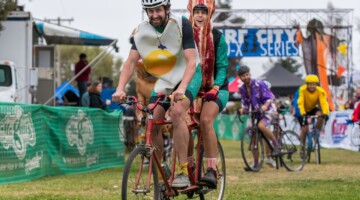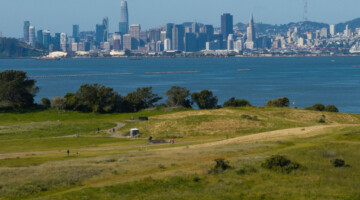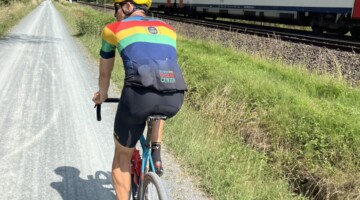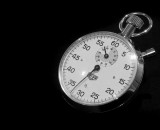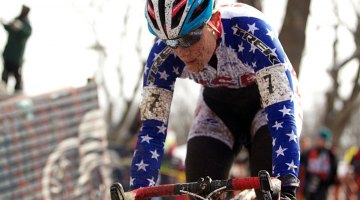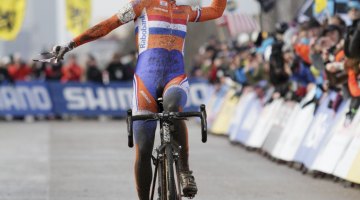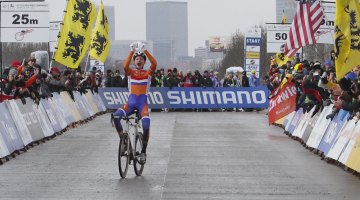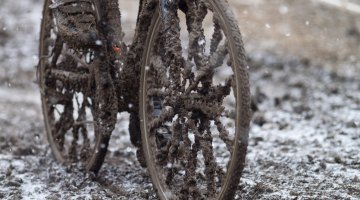by Robbie Carver
As with the 2013 National Championships, we here at Cyclocross Magazine can’t help but geek out on the lap times from the World Championship races this past Saturday in Louisville, Kentucky. With the benefit of electronic timing, we can pick apart each race to see where the moves were made or the races were lost.
The big takeaway? As with our Nationals analysis, the pre-race favorites – whether they won handily, narrowly missed out, or suffered mechanicals – all had the same quality: consistency over the duration of the race. In the end, this mattered more than fast lap times – though, of course, consistently slow lap times won’t win any medals. In our findings, outlined below, we break this down along with a few other interesting discoveries that we made along the way.
Notice something we didn’t? Let us know in the comments below!
A Class of Their Own
Before looking at our main point, it’s worth noting the one clear attribute that trumps all the others: an hors catégorie dominance in terms of ability, as witnessed through Marianne Vos and Mathieu van der Poel. In the Junior Men, positions second through eighth only had a spread of 50 seconds between them – a full seven seconds less than the gap between van der Poel and second-place Budding.
In the Women’s field, Vos finished a full 1:34 ahead of Compton, but from the time Compton crossed the line until eighth-place Sabrina Stultiens finished, only 1:32 transpired.
In both cases, seven riders filled the same time gap that the lead rider had over second place, a fact that underscores just how talented these two riders are. The rest of the lead field, by contrast, were far more evenly matched. But is that the whole story? Some racers, such as Logan Owen and Katie Compton, suffered slower lap times because of the tight course and the need to wait for opportune times to pass; without diminishing the prowess of both Vos and van der Poel, their large gaps are also evidence of how beneficial a clear track ahead of you can be.
Which brings us to our main point, because there were two riders who had nothing but open sky ahead of them, and yet failed to bring home the win.
Once Again, Consistency Makes the Difference
French champion Francis Mourey animated the early race by building up an impressive 14-second lead while clocking the fastest lap time of the elite race, at 6:55. He also had the fastest first lap time, at 7:13. Then his times fell to eighth fastest, then 16th, then 29th by lap seven. Between his fastest and slowest lap, Mourey had a 54-second spread, with most of those extra seconds coming in the second half of the race. He ultimately finished in 11th place, 1:54 down.
Compare that to Bart Wellen’s ride, who perhaps even more than Nys illustrates the value of consistency over the course of the race. Wellens appeared to have a rough start, coming across for the first lap in 18th place with a time of 7:28. For the first half of the race, he languished in the low-to-mid teens, then with only a few laps to go suddenly burst onto the scene in the top eight, finally finishing just off the podium, in an impressive fourth. Did he suddenly wake up and drop the hammer on a lap? No—though Wellens’ opening lap was his slowest, it was only 14 seconds slower than his fastest—one of the tightest overall spreads of the day. The majority of his laps, in fact, fell within a ten-second spread. Yet his ranking in lap times steadily improved: 18th fastest on the first lap, then 13th, ninth, seventh, third, and second. Wellens then clocked the fastest overall time of lap eight—which he completed only four seconds quicker than his opening lap and which would have placed him 14th fastest at that point.
The result of that narrow spread, versus Mourey’s burn and fade? Wellen’s consistency gained him 14 places from the first lap to the last, while Mourey’s inconsistency lost him 10.
Similarly, U23 silver medalist Wietse Bosmans discussed how he went out too hard in the beginning of the race, and didn’t have the legs to stay with winner Mike Teunissen by the end. This is evidenced by his lap times, which start with his fastest time on the opening lap (6:46) and progressively lengthen, finishing a full 26 seconds slower by the final lap (7:12). No lap of Bosmans’ was quicker than the previous.
Though winner Teunissen had a spread of 17 seconds, a look at his lap times show far more consistency. He opened fast to stay with the lead, but then five of the next six laps stayed within eight seconds of each other – the only variable being the burst of speed he put in to catch Bosmans on lap four, which was the fastest lap of the race at 6:44. The lesson? Expend the energy necessary to position yourself well, settle into your own pace and wait for the moment when you have to burn your matches.
In the Elite Women’s race, top-ten honors go to Kaitlin Antonneau, who had the most consistent overall race, with an impressive 11-second spread.
The Time Value of the Finish Line Salute
And what of the winners? In both the Elite Women and Junior races, victory was all but assured well before the last lap. For both Vos and van der Poel, this translated into incredibly consistent mid-lap times (six-second spread between laps two through five for van der Poel, and a seven-second spread for Vos) and a relatively leisurely final lap as each took the full length of the finishing stretch to soak up their victory: in van der Poel’s case, that translated to an extra five seconds, and in Vos’ to an extra seven, taking their next-slowest times as a reference. In fact, if you take out the final lap, Vos’ spread between slowest and fastest times is an incredibly narrow seven seconds – a spread she doubled to enjoy crossing the line to the cheers of the crowd.
In sharp contrast, both Sven Nys’ and Mike Teunissen’s victory required explosive last laps to shed Vantornout and Bosmans, respectively, so the opposite happened: last lap times were faster (though not the fastest) than many previous. In fact, it was the penultimate lap that proved the slowest for both racers, as they concentrated less on speed and more on cat and mouse tactics—Nys’ penultimate lap was a full 14 seconds slower than his final lap, and Teunissen’s was six seconds slower.
What Could Have Been: The Costs of Mechanicals and Crashes
Kevin Pauwels looked hungry and dangerous as the Belgians raced around the course, with all but one lap time within the top ten. That one lap, however, was devastating: Pauwel’s double chain drop on lap six cost him 1:44, and though his final three laps were similar to Nys’, the damage was irreparable. Similarly, Jonathan Page’s times were all within 30 seconds of each other and comparable to those positions around tenth place, barring his own disastrous lap that included a thrown chain, a crash, and a flat tire. Page lost over a minute and his position within the top ten.
For the Elite Women, the opening-lap crash affected nearly half the field; American Georgia Gould offers one example. The popular racer had high hopes on the day, but lost over thirty seconds (judging by average lap times from laps two-six) untangling her bike from the pile of riders. “I spent so much time training for this race, when I should have been doing Rubik’s Cubes,” Gould joked after the race. “Because when I had to untwist someone’s bike out of mine, it was like a puzzle. By the time I got up, I saw one person. It’s super frustrating. I know I have good fitness and it’s hometown crowds, so it’s super disappointing to start a race that way.”
Perhaps the most devastating “what could have been”, from an American perspective, was Logan Owen’s race in which a mistimed start and an early crash ended his chances at competing for the top spot. If you take out his first and fifth laps (when Owen dropped his chain), Owen had an impressively consistent spread of only five seconds. Assuming zero mechanical issues/crashes and an average lap time of 6:55 (based on non-incident laps), Owen would have finished in 41:30 at an average speed of 24.29 kmh, to finish with Silver at 43 seconds off Van der Poel’s pace. This is completely consistent with the time spreads between Owen and van der Poel when both had clean races at the World Cups. Of course, who’s to say what additional speed Owen may have found to stay in contention for gold?
Similarly, silver medalist Katie Compton’s opening two laps – in which she had a mechanical and then was forced to work through traffic – were the slowest of her first five laps. However, Compton’s fastest lap was only three seconds quicker than Vos’ slowest. Discounting her last lap, in which Vos sat up to enjoy the win, Compton’s fastest time was four seconds slower than Vos’ slowest (non-last lap) time, suggesting that Compton may have just found a different way of reaching the same podium position.
As a side note, Compton’s last two laps were over ten seconds slower than her middle two, illustrating what happened after she established her place in second but knew Vos was too far ahead to contest gold.
The Motivation of the Podium, The Breaking of the Spirit
Another comparison worth looking at from the Elite Men’s race is the final laps between third place finisher Lars van der Haar and eventual eighth place finisher Niels Albert. Though he had fallen off of the lead duo, Albert held the third position for some time, clocking times not too far off of Nys. As van der Haar chased up to the defending champion, however, and then dropped him in a bid for the podium, the fight left Albert. A look at their times, starting at lap six, quantifies Albert’s throwing the white flag:
| Name | Lap 6 | Lap 7 | Lap 8 | Lap 9 | Final Time |
| Lars van der Haar | 7:20 (1) | 7:23 (6) | 7:26 (3) | 7:25 (3) | 1:06:00 |
| Niels Albert | 7:21 (4) | 7:27 (9) | 7:42 (13) | 8:03 (25) | 1:06:54 |
As you can see, Albert and van der Haar battled during laps six and seven, but by lap eight the band had snapped, and by the final round Albert had all but giving up, clocking one of the slowest non-mechanical lap times of the top-twenty finishers and losing an additional four places by the finish line.
Conditions Make All the Difference
Not only did Mathieu van der Poel clock the fastest laps of his own race, but also the fastest laps of the day: his opening lap time of 6:37 was 18 seconds faster than the fastest time in the Elite men – Francis Mourey’s second lap of 6:55. But don’t hand him Nys’ jersey just yet: the frozen conditions that van der Poel raced on allowed for much higher speeds than the slippery, muddy mess that the Elite men fought on. A similar situation happened in World Cup Koksijde this season, when van der Poel clocked even times with winner Sven Nys – a sign of incredible talent on van der Poel’s part, to be sure, but also of what pouring rain will do to sand dunes.
What did we miss? Take a sharp look at the results below, whip out your calculator, and see what you can learn about the races at Bandman park this past weekend. We want to hear it!
Results and Lap Times:
Elite Men:
Elite Women:
U23 Men:
Junior Men:

